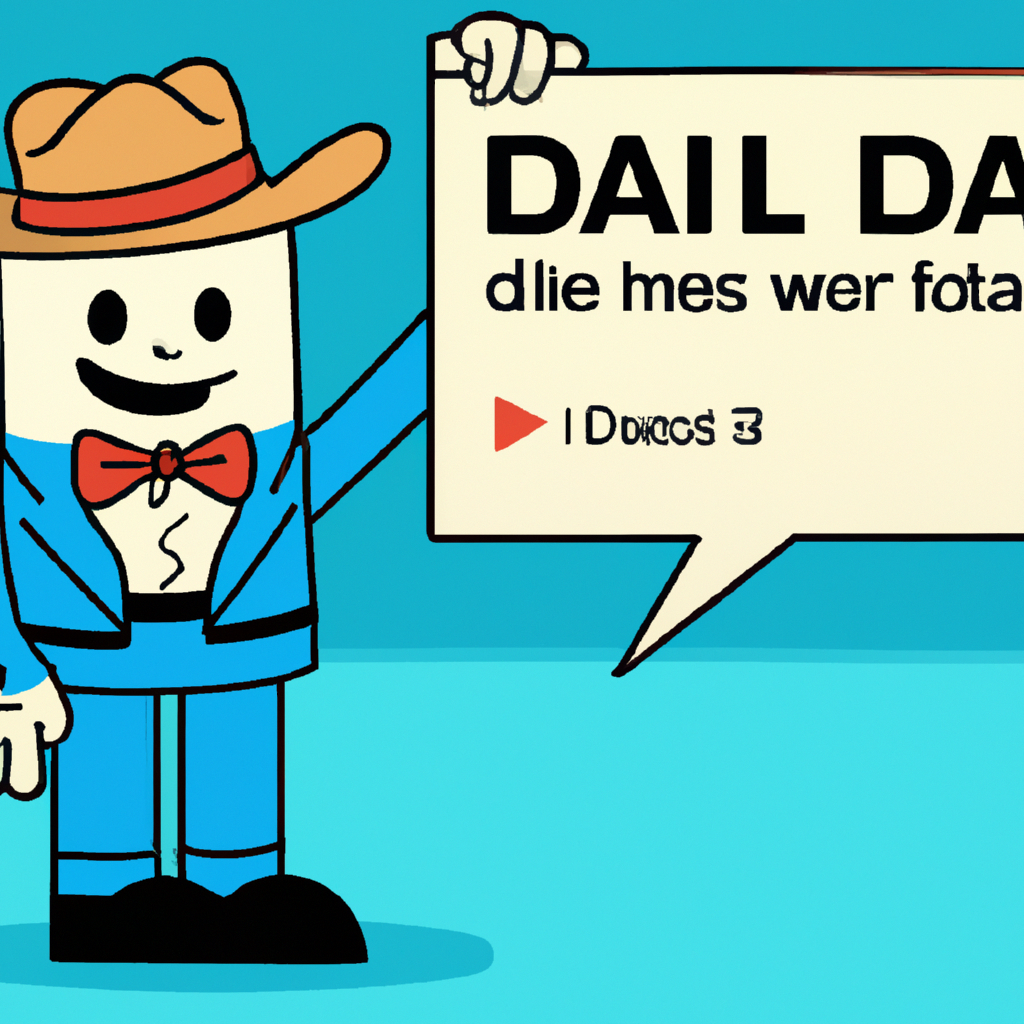Content Map
Example Response:
Key Takeaways:
- Content mapping is crucial in personalizing marketing: Understanding the buyer’s journey and lifecycle stages helps identify how to target content for each stage, providing a more personalized experience for the customer, leading to higher conversion rates.
- Creating a cohesive and personalized customer experience: Content mapping is the key to an effective digital content strategy. Identifying gaps and opportunities helps create a personalized journey for the customer, which in turn leads to increased customer loyalty and lifetime value.
- Developing buyer personas for different audience members: By overseeing content mapping and creation, marketers can match customer needs and problems with relevant content, creating a more personalized experience and increasing engagement with the brand.
- Nurturing prospects and customers for effective sales: Cataloging content and avoiding duplication helps in the purpose-driven creation of content that is tailored to different stages of the buyer’s journey. This, in turn, helps create an effective marketing strategy and sales funnel.
Importance of Content Mapping in Personalizing Marketing
Through effective content mapping, marketers can offer personalized experiences to potential customers by understanding their unique buying journey and lifecycle stages. In this section, we will discuss the importance of content mapping in personalizing marketing, and explore how targeting content for each stage of the buyer’s journey can help to drive conversions and engagement.
Understanding the Buyer’s Journey and Lifecycle Stages
Creating an effective digital content strategy? It needs a deep understanding of the Buyer’s Journey and Lifecycle Stages. Identify different stages in a buyer’s journey, like awareness, consideration, decision-making, and retention. Tailor content to meet needs of target audience at each step.
Be successful? Create content for each stage of Buyer’s Journey. Deliver personalized and relevant info to prospects and customers. Target pain points and challenges experienced by prospects in each stage. Address them with informative content. Build trust and guide prospects to make purchase.
Evaluate current content. Ensure it aligns with audience needs at each stage of the lifecycle. Make adjustments to fill gaps and missed opportunities. Create buyer personas for different audience members. Know how to meet individual customer needs.
Avoid duplicating non-purpose-driven materials. Focus on delivering value-added information that helps consumers solve problems. Build relationships throughout each touchpoint. Guide customers on their journey to conversion.
Understand the Buyer’s Journey and Lifecycle Stages. Craft targeted messaging that resonates with customer goals. Guide customers through every stage of their journey. Achieve long-term loyalty and success. Like a good shepherd with a flock of sheep.
Targeting Content for Each Stage of the Buyer’s Journey
Targeting content for each stage of the buyer’s journey is crucial to personalize marketing. It helps in understanding the buyer’s journey and life cycle stages, and then mapping relevant content to each stage for a better customer experience.
The following are the contents that can be mapped for each stage of the buyer’s journey:
- Attract: Ad campaigns, blog posts, social media posts, website content.
- Engage: Detailed product descriptions, case studies, eBooks, etc. Showcase your brand’s expertise.
- Convert: Demos, free trials, testimonials, feedback from customers.
Mapping content helps prospects move through stages. It helps in identifying gaps in existing strategies for new opportunities. Effective buyer personas can be used to oversee content mapping. Persona groups help in understanding audience variation, match relevant concerns voiced by each group, create successful sales, and an efficient cataloguing platform.
Personalizing the experience with addicting customer experiences is crucial in engaging prospects and building brand loyalty.
Creating a Cohesive and Personalized Customer Experience
Effective digital content strategy is a crucial aspect of creating a personalized customer experience. In this section, we will discuss the importance of content mapping as a means of identifying gaps and opportunities in your digital content strategy. Backed by source names from our reference data, we will explore the benefits of a cohesive and personalized customer experience and offer insight into the role content mapping can play in achieving this.
Content Mapping for Effective Digital Content Strategy
Content mapping is essential for successful digital content strategy. It means organizing and coordinating content to meet the target audience’s needs at different stages of their buyer’s journey and lifecycle. Marketers must identify the audience’s requirements to create engaging and informative content for each stage.
Content mapping helps to provide a cohesive and personalized experience. By identifying gaps and opportunities, marketers can tailor their approaches to meet customer needs. Developing buyer personas is a vital part of the process, as it helps to understand the different audience members.
Cataloging materials is important to enable smooth content flow when using it in marketing processes towards converting leads into prospects. Aligning marketing goals with practice-based strategies gives good results in terms of implementation. This also allows for a personalized approach to consumers’ FOMO culture tendencies.
Content mapping is the missing piece of the puzzle in a content strategy. It enables marketers to create effective strategies that meet the audience’s needs.
Identifying Gaps and Opportunities in Content Strategy
Content mapping is essential for digital marketing. Analyzing and recognizing gaps and chances in a content strategy is key. Adjusting messaging to suit the target audience’s needs at each stage of the buyer’s journey can help increase engagement and conversions.
Businesses must study customer behavior, media consumption trends, market positioning, and other factors to get the most out of their digital content. Doing so allows them to provide the right content to the right customer at the right time, boosting marketing performance.
Content mapping helps businesses create a cohesive customer experience across different touchpoints. It also prevents overlap or duplication in their content catalog. Companies can prioritize production based on their findings. This simplifies the content creation process and provides better content to the target audience. Content mapping is a must for effective digital marketing.
Developing Buyer Personas for Different Audience Members
Developing buyer personas is a crucial component of any successful content marketing strategy. In this section, we’ll explore two core aspects of the process:
- Overseeing content mapping and creation to ensure consistency and a clear brand voice
- Matching customer needs and problems with relevant content
By doing so, you can create content that resonates with your target audience and drives meaningful engagement.
Overseeing Content Mapping and Creation
In the digital world, it’s essential for businesses to oversee content mapping and creation. That means figuring out what customers need and creating messages that fit their requirements. Overseeing this process means businesses can keep their messaging consistent and give customers an appropriate experience.
Content mapping helps with the buyer’s journey. It helps create tailored messages that guide individuals through the process. Engaging copy that meets customers’ needs builds trust and loyalty.
Content mapping also identifies gaps in a company’s strategy. This lets business owners change their strategies and assign people to oversee different parts of content creation. Cataloging every piece of content avoids duplication and helps teams work better together.
Demand Metric says that “content marketing brings six times more conversions than traditional methods.” Investing time or delegating to trained staff makes sure businesses give the right content to the right people. It’s like giving a thirsty man water, not a sandwich. Good content mapping and creation leads to better conversions and a stronger brand image.
Matching Customer Needs and Problems with Relevant Content
Matching customer needs with content is a must in marketing. Knowing the buyer’s journey and lifecycle helps target content for each stage. This means having a personalized experience that encourages prospects to buy.
Creating buyer personas is key to mapping content to customer needs. Identifying gaps and opportunities in the content strategy helps create content that resonates. Cataloging content ensures there’s no repetition and a purposeful approach.
Successful marketing needs content tailored to the buyer’s journey. Matching customer needs with content that answers their questions is how brands become thought leaders. This leads to more conversions, engagement, and revenue.
To ensure success, oversee every step of the content mapping process. Create an agile digital strategy that changes with market trends and consumer preferences. Being flexible and responsive helps establish the brand as an industry leader.
Nurturing Prospects and Customers for Effective Sales
Nurturing prospects and customers is crucial for effective sales, and in this section, we’ll discuss two essential sub-sections. We’ll explore the importance of cataloging content to avoid duplication and how purpose-driven content can lead to successful marketing campaigns. According to the Reference Data, nurturing prospects can increase sales by up to 20%, making this a critical topic for businesses of all sizes.
Importance of Cataloging Content and Avoiding Duplication
Content cataloging is essential for businesses that want to offer a personalized experience. Organizing existing content is key to making sure every piece is unique. Duplication can reduce website traffic and harm SEO, so it’s a must to avoid.
To make the most of content, teams should note topics in each piece. Making metadata tables can help get info from existing content. This makes it easier to reuse old material and create new material.
Cataloging also lets you easily access documents, so you don’t make similar content by accident. Up-to-date catalogs mean you can repurpose without duplication, giving marketers more flexibility.
Cataloging also helps sales, as reps can find relevant assets and blog posts faster. In short, cataloging and avoiding duplication can help businesses optimize strategies and give customers an amazing experience.
Purpose-driven Content for Effective Success in Marketing
Developing content with purpose is essential for successful marketing. Incorporating purpose will create a content map to provide personalized experiences and solve customers’ needs. This will lead to more brand recognition and sales.
Identify gaps and opportunities in your content strategy. Use a cohesive digital content strategy for different buyer personas. Match their needs with relevant content.
Understand the buyer’s journey and lifecycle stages. Give unique, valuable information at each stage to build trust and loyalty. Avoid duplication by cataloging available content. Make room for new ideas that appeal to prospects and customers.
Purpose-driven content impacts existing customers and new prospects. Target each stage with messages. Nurture leads for greater ROI from successful sales. Use compelling language and storytelling techniques for a seamless experience.
In conclusion, purpose-driven content is critical for effective marketing success. Match customers’ needs with relevant content to increase brand awareness and sales. Provide a seamless experience.
Some Facts About Content Mapping:
- ✅ Content mapping helps create personalized content at each stage of the buyer’s journey, with the goal of driving them towards a purchase decision. (Source: HubSpot)
- ✅ Placing selling content in the right quantities and at the right time is crucial for business success in content mapping. (Source: SEMrush)
- ✅ Content mapping is a targeted content marketing approach focusing on the needs and relationships of the customer. (Source: publuu)
- ✅ Effective content mapping can identify gaps and opportunities in content strategy, and is overseen by whoever is responsible for content creation. (Source: SEMrush)
- ✅ Creating content maps is one of the most effective strategies to keep content aligned with a company’s goals. (Source: publuu)
FAQs about Content Map
What is content mapping?
Content mapping is a strategy to create personalized content for prospects at different stages of the buyer’s journey. It involves identifying the needs of the buyer at each stage and creating a plan to drive them towards a purchase decision.
How does content mapping work?
Content mapping takes into account the characteristics of the person consuming the content and their lifecycle stage. By creating targeted and relevant content, businesses can create a more cohesive and personalized customer experience and identify gaps and opportunities in their content strategy.
What are buyer personas and why are they important in content mapping?
Buyer personas are fictional representations of your ideal customers, based on market research and real data about your existing customers. They are critical in developing successful content mapping because they allow businesses to research and segment their target audience and tailor content to specific personas and lifecycle stages.
How can Google Analytics help with content mapping?
Google Analytics provides valuable insights into how consumers interact with a website and can help businesses identify areas where they can improve their content mapping strategy. By tracking user behavior and engagement, businesses can determine which pieces of information are most valuable to customers at each stage of the buying journey and adjust their content strategy accordingly.
What are some tips for creating a content map?
To create an effective content map, businesses should focus on providing helpful, relevant, informative, and timely content for their intended audiences. They should avoid providing too much “selling” content too early in the decision-making journey and instead concentrate on goals beyond selling. It’s essential to place selling content in the right quantities and at the right time for business success.
How does a content map fit into a content marketing funnel?
A content map is a targeted content marketing approach focusing on the needs and relationships of the customer. It describes how each piece of content fits and supports the consumer journey. By building a catalog of content that avoids duplication and shows which content is perfect for a certain stage of a sales funnel, businesses can better nurture prospects and customers, make a buying decision, and involve them at all stages of the marketing funnel.







